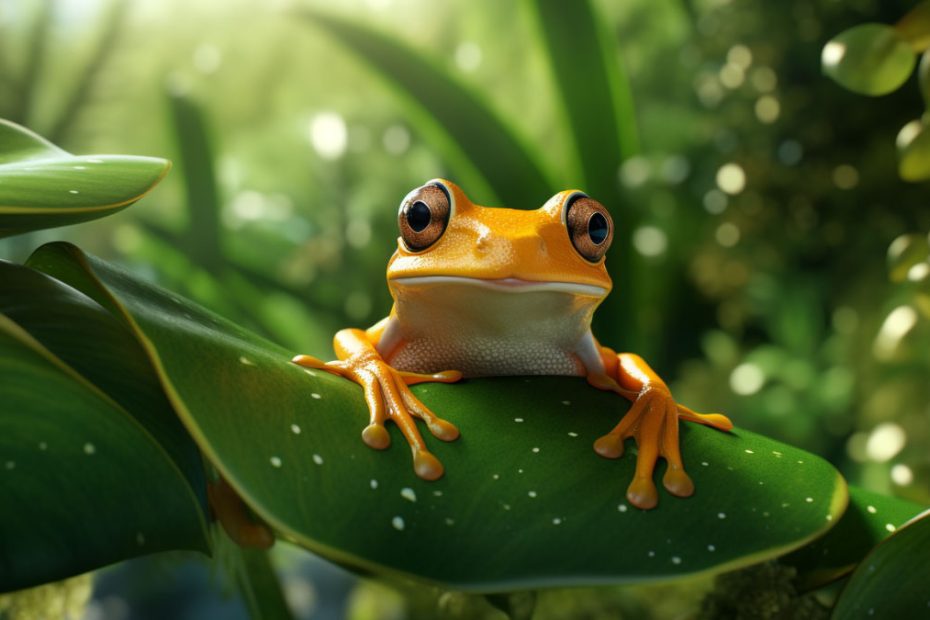Heat lamps are necessary equipment when you want to keep a space or an object warm. Most owners with cold-blooded pets also use these lamps to regulate their temperature.
But do frogs need heat lamps? In most cases, a heat lamp is necessary for your frog’s enclosure to keep their temperature regulated. However, if the temperature in the room is within the required range, you might not need one. Setting up the lamps is not complicated but risky if done wrong.
Please continue reading to learn more about frogs and whether you need to add a heat lamp to their enclosures.
Do Frogs Need Heat Lamps? (Frog Thermoregulation)
Frogs, like other amphibians, are ectotherms, animals that rely on external sources to warm up. This means, as pets, they require you to warm their spaces so their bodies remain within an ideal temperature.
A heat lamp is one of the most used equipment in warming these amphibians’ enclosures. However, heating pads or aquarium heaters are more common for aquatic frog species.
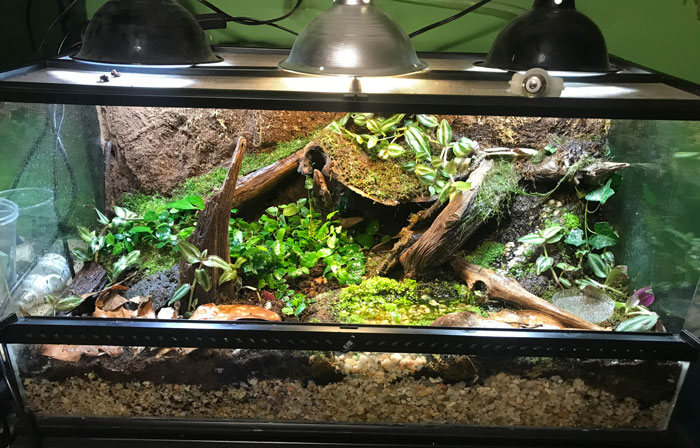
Like humans, during a frog’s metabolic reaction, where food is turned into energy, heat is the by-product. What differs with humans is that, usually in frogs, this heat is too low. Also, these amphibians don’t use this heat to regulate their body temperatures.
In the wild, they depend on other heating activities, including basking under the sun to warm their bodies when they feel cold. When the temperatures are too high, they hide under a shade to keep cool.
Some frog species also change their colors to thermoregulate, as darker frogs tend to warm up faster. This species includes the Tree frog, which also changes to brighter colors when it wants to cool off. Some frogs migrate to find places with a suitable temperature and humidity.
How To Setup Heat Lamps In a Frog’s Enclosure?
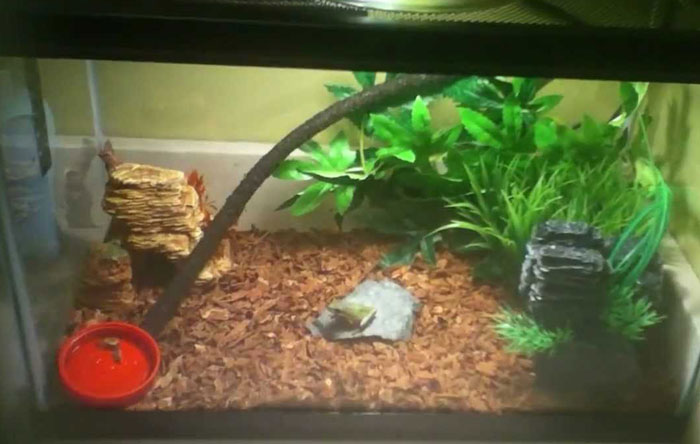
Setting up the heat lamp is not a complicated activity and is done shortly after setting up the enclosure for your frog. The following are the steps to set up the heat lamp for your pet frog.
- Step 1: Determine the temperature requirements for your frog species (read the next section for requirements).
- Step 2: Select the appropriate heat lamp for your frog enclosure. An appropriate lamp is determined by the bulb’s wattage, which should match the enclosure’s size. Usually, ceramic heat emitters or UV-B heat bulbs are used.
Watch some of the heat lamps used by most reptiles and amphibian lovers
- Step 3: Place the heat lamp on one side of the enclosure to create a suitable thermal gradient. The gradient allows one section of the enclosure to remain cool while the other is warm. The difference allows the pet to choose an ideal position.
The heat lamps should be away from any flammable material, and the pet shouldn’t be able to touch it. Use a heat lamp with a clamp and arm, which enables you to position it at any suitable point in the enclosure.
- Step 4: Install a thermostat to monitor and regulate the temperature of the heat lamp. The thermostat is ideal as it also prevents overheating in case one of the components in the heat lamp fails.
Place the thermometer for the thermostat in the frog’s preferred basking point.
If you’re unsure how to set up the heat lamp, consider seeking help from an expert. Some pet stores also have experienced individuals who can help you set it up.
If you own a Pacman, this video should help you set it up (Note: they use a heat pad for heating).
Temperature Requirement For Different Frog Species
The temperature requirement for pet frogs varies with the species. Owners must learn the requirements for their pets to ensure they keep their enclosure within these temperatures.
The following list contains commonly kept frog species and their temperature requirements.
1. Red-eyed Tree Frog
Red-eyed tree frogs are tropical frogs found in tropical rainforests, where it’s warm and humid. They require a temperature between 75 and 85°F (24-29°C) in their enclosure.
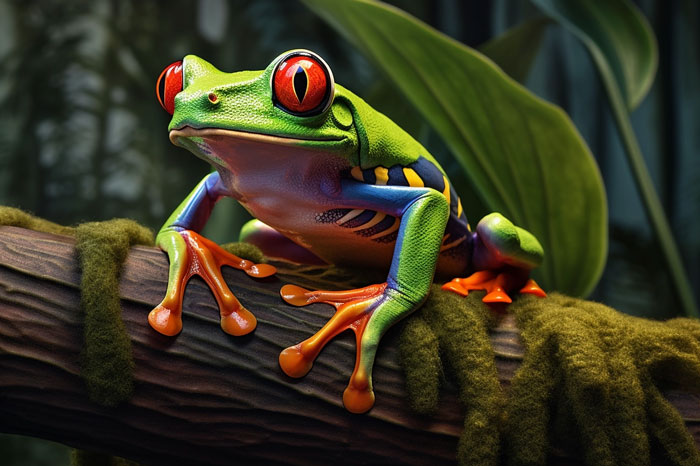
2. White’s Tree Frog
White’s tree frogs do well in both dry and wet habitats and require temperatures between 75 and 85°F (24-29°C) in their enclosure. The warmest parts on the thermal gradient should be near their basking spot.
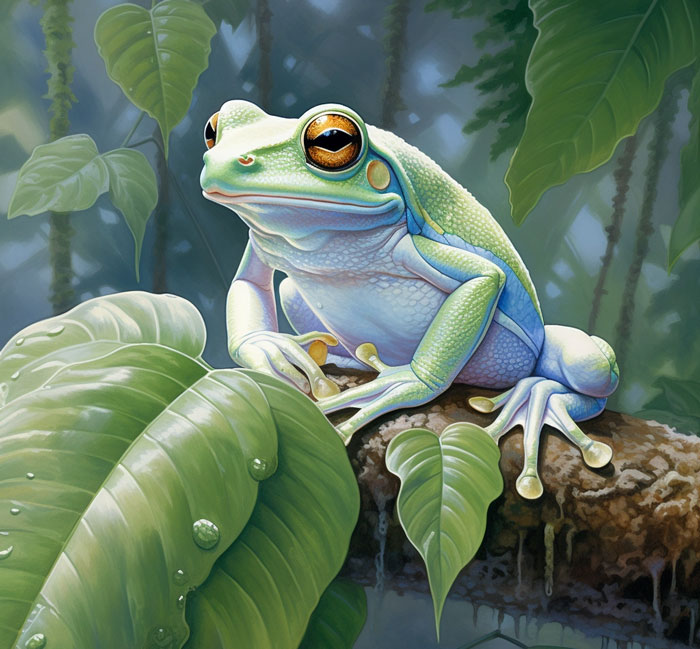
3. African Dwarf Frog
African dwarf frogs are aquatic amphibians found in equatorial Africa, where temperatures are high throughout the year. Their tanks or aquariums are required to be within 68 and 78°F (20-26°C).
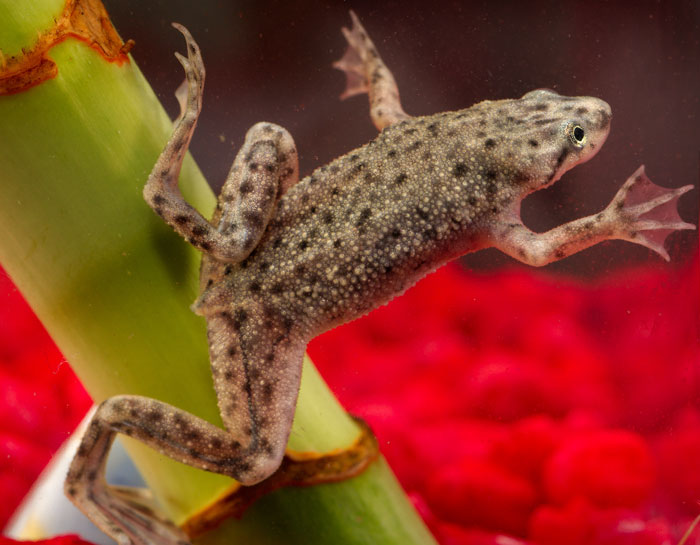
4. African Clawed Frog
African clawed frogs live in various habitats in the wild, in arid and semi-arid Sub-Saharan Africa. This means their temperature requirement is wide, usually between 60 and 80 °F (16-27°C).
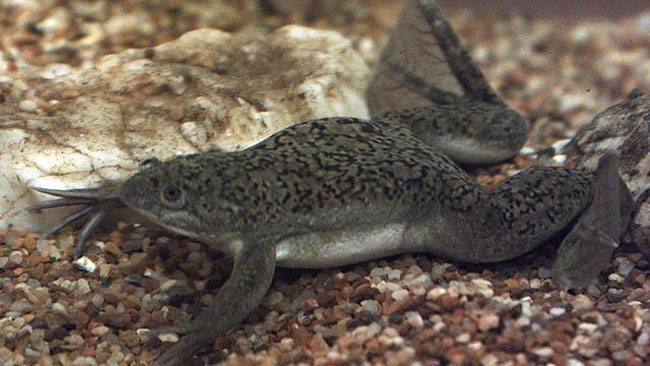
5. Poison Dart Frogs
Poison dart frogs are found in tropical rainforests in humid climates. They require temperatures between 65°F and 84°F (18°C to 29°C) in their enclosures. However, most do well in the temperatures around 70°F (21°C).
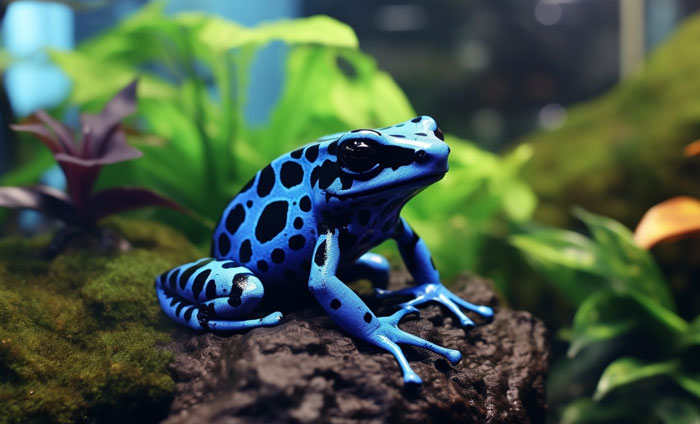
6. Pacman Frog
Pacman frogs are indigenous to rainforests in warm and humid environments. They require temperatures between 65 and 85°F (18-29°C) in their enclosures. Keep the temperature above 75°F (24°C) during the day and below that at night.
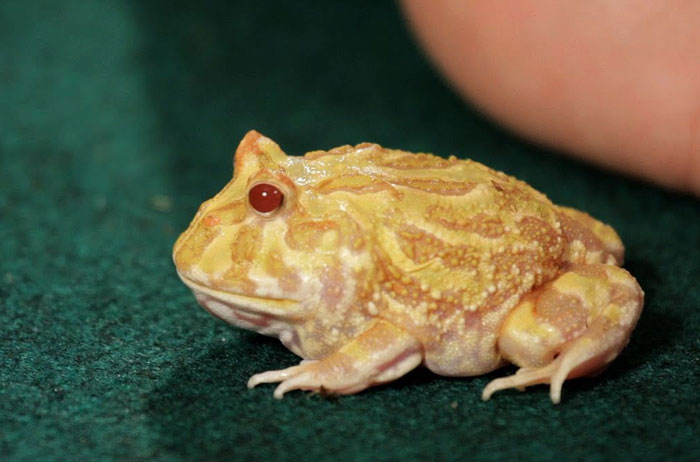
7. American Bullfrog
American bullfrogs are highly aquatic, preferring environments with warm temperatures. Their enclosure and water temperatures as pets should range between 74 and 84°F (23 – 28°C).
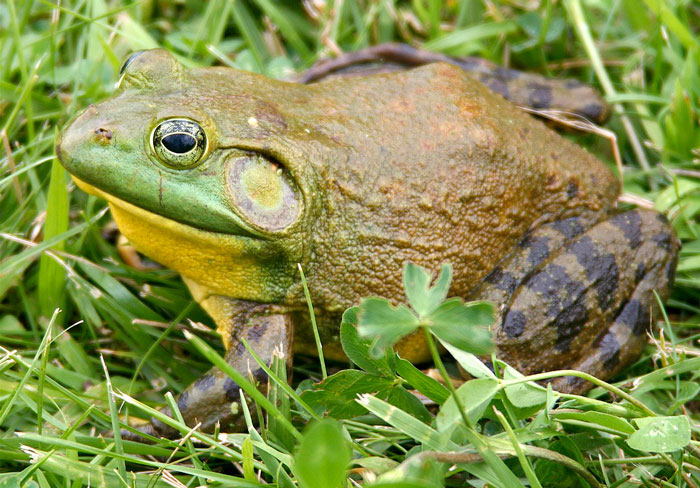
8. American Green Tree Frog
American green tree frogs require temperatures between 65 and 80°F in their enclosures. Like most other pet frogs, the temperature varies between day and night. During the day, it should be above 70°F and below that during the night.
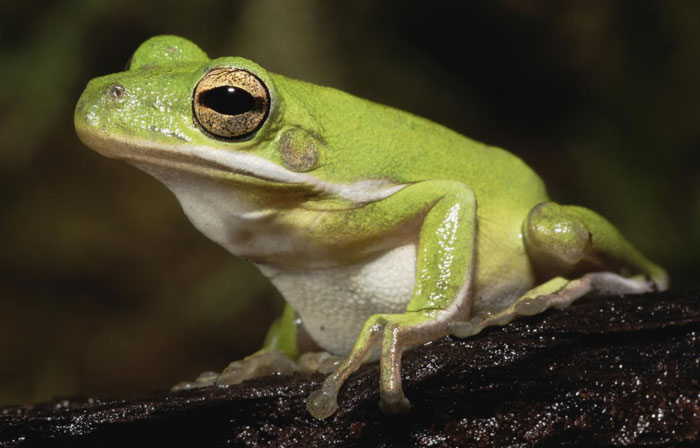
Can I Keep My Pet Frogs Without A Heat Lamp?
While it’s best to have a heat lamp in the frog’s enclosure or aquarium, it’s not necessary in some circumstances. The following are the circumstances when you can keep your pet frog without a heat lamp.
1. Compatible Climate
One of the circumstances where it might not be necessary to add a heat lamp in your frog enclosure is when the climate is compatible. A heat lamp might not be a must-have if you live in areas where the climate is compatible with your frog’s required temperature.
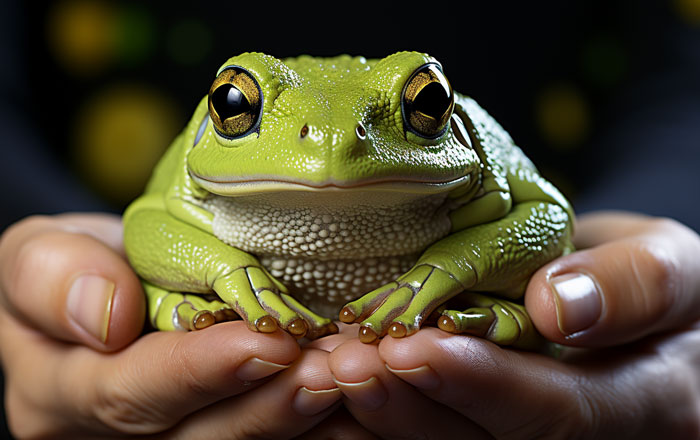
2. Home Climate Control
Another instance where you can keep your pet without a heat lamp is when you have a home climate control system. The preferred temperatures for most of them fall within most houses’ temperatures, and you can use this system instead.
3. Alternative Heat Sources
Another circumstance where you can keep your frog without a heat lamp is when you have other alternative heat sources. These alternatives include under-tank heating pads and room heaters.
It won’t be necessary to add a heat lamp when you have either of these alternative heat sources in the enclosure.
Are There Risks of Using Heat Lamps?
There are several risks when using heat lamps in the frog’s enclosure. Learning these risks is crucial to avoid risks and take precautions to prevent them when setting up the heat lamps. These risks include the following.
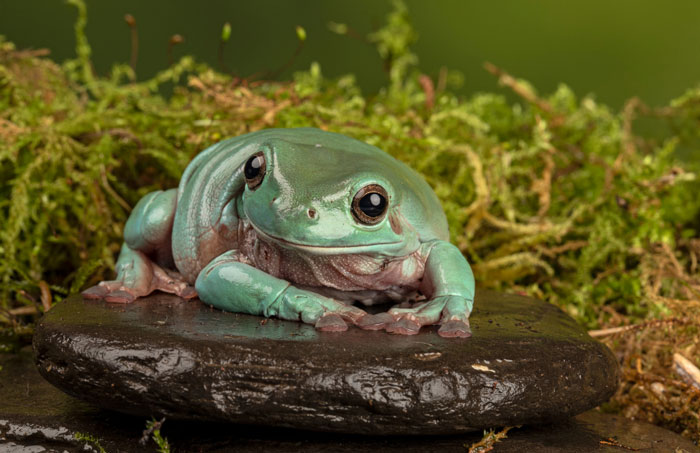
1. Overheating
One of the main risks of using heat lamps is overheating in the enclosure. Overheating is likely when the frog is too close to the bulb or the temperature isn’t properly regulated. Overheating can cause dehydration, stress, and even death.
2. Burns
There are also risks of burning if the frog jumps on the heat lamps, as they become very hot when working.
3. Fire
There is also a fire risk if you place the lamps near flammable material in the enclosure.
4. Temperature Fluctuations
There are also risks of temperature fluctuations when using a heat lamp. Rapid temperature changes usually stress the frogs, which negatively impacts their health.
This section contains three questions related to this topic on frogs and heat lamps. Their answers are well-researched to better your understanding of the topic.
Related Questions
This section contains some questions related to this topic on frogs and heat lamps. Their answers are well-researched to better your understanding of the topic.
The possibility of the pet frog hibernating will vary with the temperature in the room and the frog’s temperature tolerance. If the temperature in the house drops too low, it might trigger their natural hibernation behavior.
Frogs need a heat lamp during winter since the temperature drops too low for them. However, since most people use air conditioning systems in their homes during winter, the pets will be okay.
Whether to leave the heat lamp on overnight depends on the temperature in the room. If the temperature in the room is within the ideal range, you can turn it off overnight.
Final Words
If your home has an air conditioning system, the heat lamp may not be necessary for your pet frog. Most of the frog species will survive living in these temperatures. However, in most cases, it is usually ideal to add one to the enclosure in case the temperature drops.
Adding one usually involves following the steps discussed in the article. However, this activity has some risks, and it’s necessary to take precautions.

Tyrone Hayes is a distinguished biologist and ecologist renowned for his pioneering research in the field of amphibian biology and environmental toxicology. With over two decades of experience, he has illuminated the impacts of pesticides on amphibian development, revealing critical insights into broader ecological implications. Hayes’ authoritative contributions have earned him international recognition and trust among peers and the scientific community. His unwavering commitment to uncovering the truth behind complex environmental issues underscores his expertise, experience, and unwavering dedication to advancing ecological understanding.
